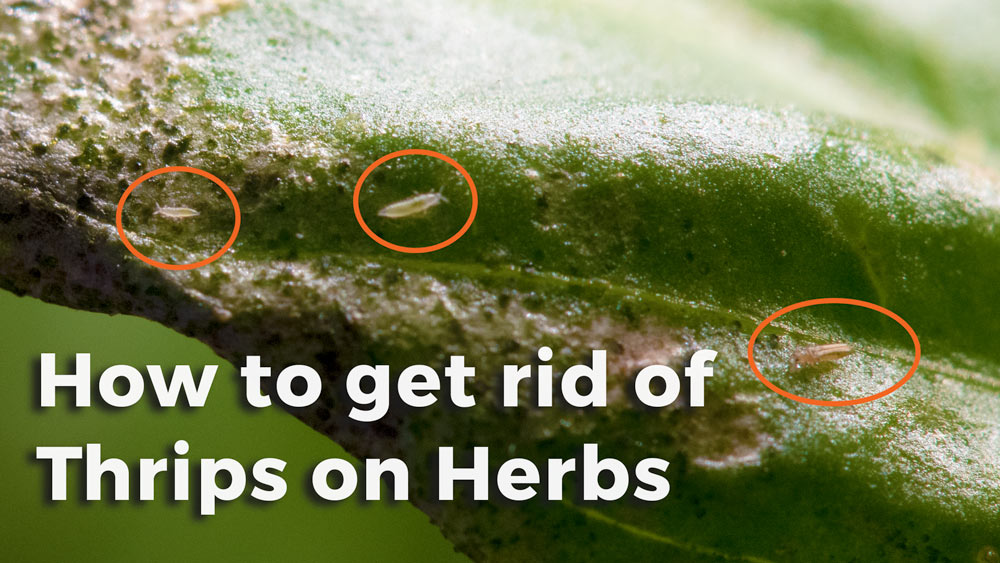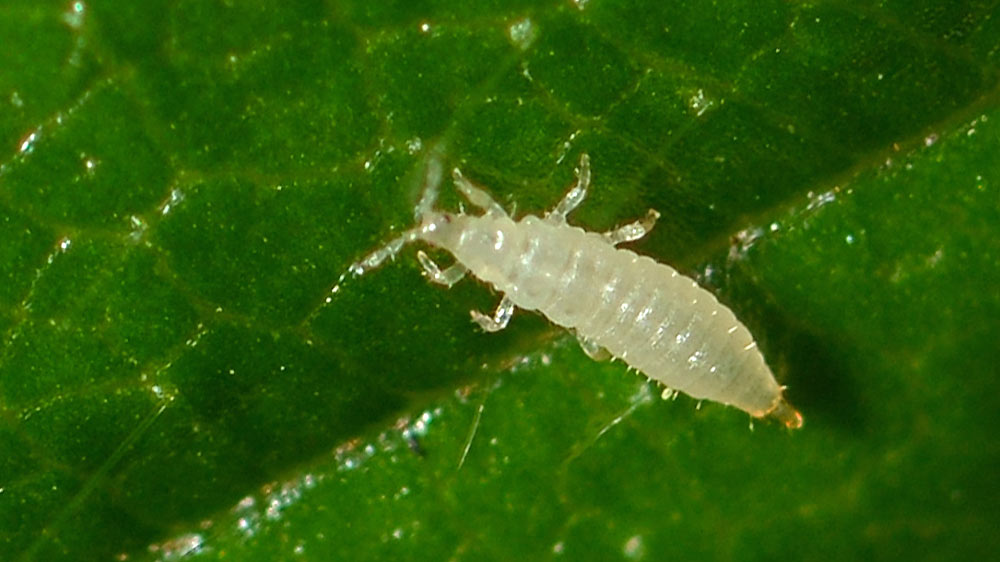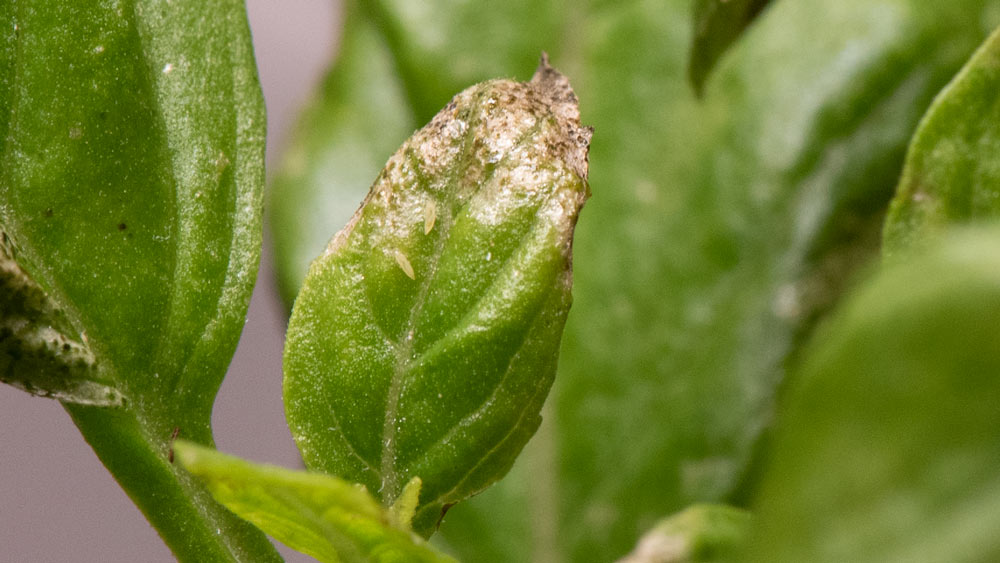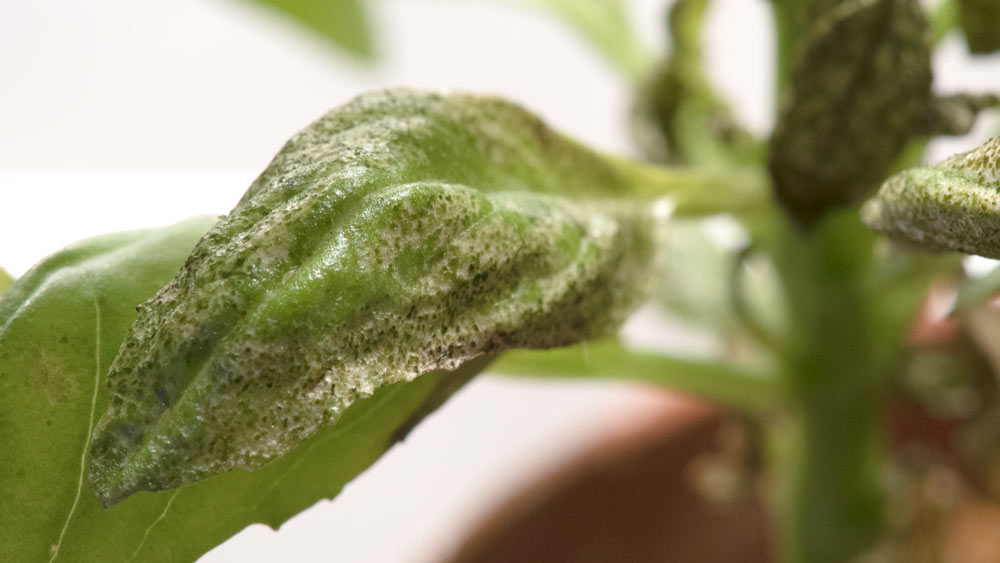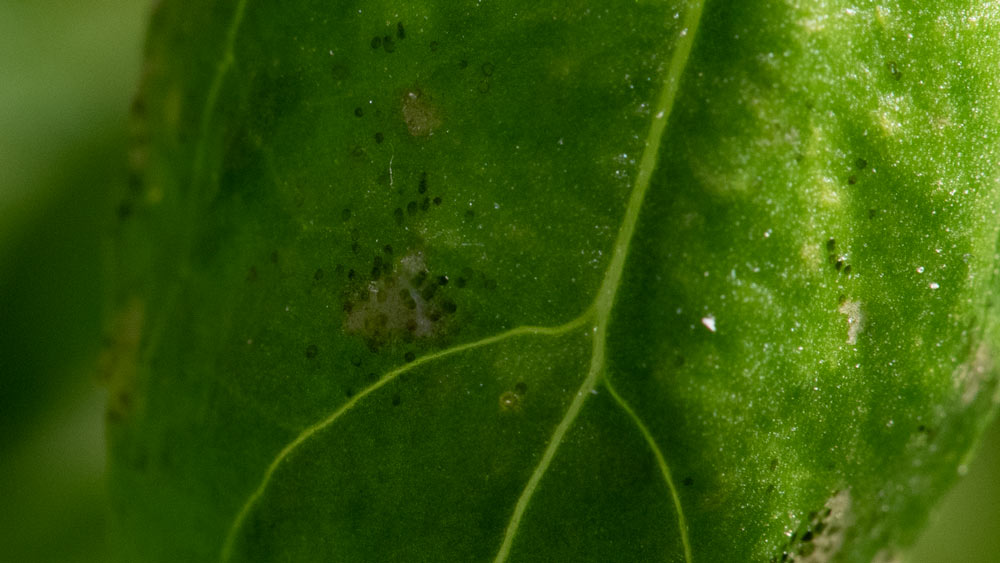How to detect thrips on herbs – How to recognise thrips
Thrips feed by scraping and piercing plant tissue. They suck out the sap and cellular contents from leaf tissue and other plant parts.
The damage done to the leaves by the sucking, scraping and piercing can be detected as the characteristic damage of silvery shining areas, the silvery leaf stippling, scarring and leaf distortion. Another very recognisable damage to the leaves are the little brown or black specks of feces on the leaves.
Leafs may also discolor and become rolled, and very often also distortion of tender new growth, because that is where thrips like to feed.
Because thrips are so small and hard to detect, the presence of thrips is usually only determined after the thrips have damaged the leafs and their fecal matter deposited on the leaves is noticed.
Another way to determine if thrips are infesting your plants in or around your home is to put a blank sheet of white paper beneath the flowers or leaves of the plant and shake the plant. If there are thrips on the plant, at least some will fall off, and their darker bodies will be easily seen on the white paper.
Characteristics of thrips we need to know to combat them
Controlling thrips is not an easy task if you look at their biological characteristics:
- Thrips often prefer to hide and feed in protected areas of the plants (inside buds, under leaves,…)
- Thrips lay their eggs inside the leaf tissue or in the flower (which make that they are protected against insecticides)
- They have a short life cycle (about 40 days) but a very high reproduction rate, most of the thrips are female and can lay between 100-250 eggs.
- Born from the egg, they become adult after 14 days, depending on the temperature
- Adult thrips grow wings allowing them to fly and spread to other plants easily.
How to control and kill thrips – How to get rid of them?
With these characteristics in mind, we quickly realize that action is needed when we detect thrips on our plants or herbs.
If we don’t take action, the thrips population will develop explosively (some thrips species doubles its population in five days time) and will destroy the plant but will emigrate to other plants nearby too. So we don’t want to lose time.
The best option to control, kill and get rid of thrips is to detect them as soon as possible and take action immediately if any are detected. The actions I suggest are :
- Prune all damaged and infected, infested leaves and plants.
- Spray down resilient plants with the water spray bottle, focusing on the bottom/underside of the leaves. This will knock the thrips off the plant and can be repeated whenever it is needed.
- Spray or wash the plant with a soap and water solution (see how to make an insecticidal soap), making sure you get the solution on all the leaves and other areas of the plant.
- Keep repeating these actions until all thrips are gone.
Thrips can also be controlled by a range of natural enemies, but for indoor herb garden or indoor plants that remedy is not an option.
Join the community
If you are looking to grow an amazing herb garden, I strongly recommend signing up to our community and gain access to our FREE downloads and regular updates. We want to ensure your success by sharing our tips and tricks with you for growing herbs.
Leave a comment
Share your experiences with Thrips in the comments below.


